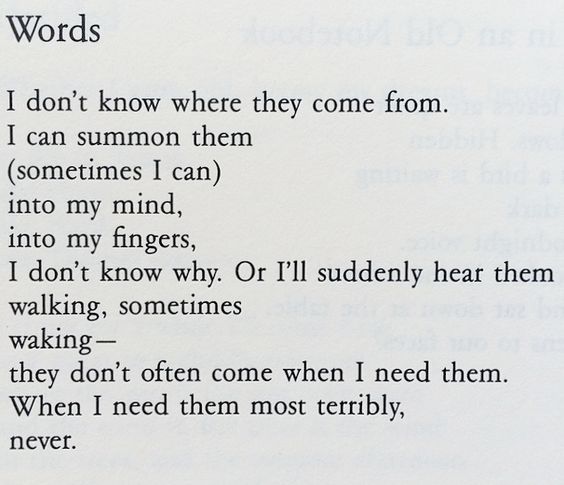The Engineer and I had a baby!
I haven’t written much during the pandemic – it hasn’t felt like there’s much worth sharing when time feels meaningless and trips home keep getting canceled and my creativity, like so many people’s, is stymied by the historical moment we’re living in. But this is one story I’d like to write down somewhere.
Finding Out
We had decided to start trying when 2020 began, and in late May we had pretty much written off the month. I still felt a little weird, though, so without telling the Engineer I decided to take a(nother) pregnancy test one Saturday when I got up to feed the cat.
At that point I had taken several negative tests in previous months, and I was fully expecting this one to be negative as well. After feeding the cat and sitting with her for a few minutes, I went to look at the test. It’s going to be negative. It’s going to be negative.
There were two lines.
I actually had to count the lines several times to believe it. I was so used to seeing just one, but there was definitely a second line.
Usually I try to go back to sleep after feeding the cat. No way that was happening now. So I tiptoed upstairs, grabbed a digital pregnancy test, and told a still-sleeping Engineer that I was going to read for a little bit (untrue) because I felt pretty awake (true). I don’t think he even heard me.
The cat, delighted that I was keeping her company for her breakfast, squeaked at me and twined around my ankles while I tried to wait the full five minutes for the test to run. I think I made it three minutes before “just going to check.” And there it was. Pregnant.
Tiptoeing upstairs again (the Engineer still didn’t stir), I grabbed the stuffed narwhal we bought over a year ago when we first started talking about kids. I set up the narwhal on our kitchen table with the pregnancy test and a note that said, “Can’t wait for my friend to get here! ETA: 9 months.” Then I settled down on the couch with my book and waited.
And waited.
And waited. I finished my book, read a magazine, watched a few episodes of something on Netflix, and still nary a sound came from upstairs. I tried to be patient. It was Saturday, after all, and the Engineer deserved to sleep in, plus I didn’t want to ruin the surprise by acting too weird before he had a chance to see the note and the narwhal. But by 9:30 (three hours, mind you, after I had found out!) I couldn’t take it anymore.
“Are you going to get up soon?” I asked, flopping across the bed to stare at the still-sleepy Engineer.
“Maybe. Why do you have so much energy?” he asked. “You’re like a Golden retriever.”
“I’m just in a good mood today,” I said evasively. “Come downstairs. I want to have breakfast with you.”
“Okay,” he said, “I’ll be down in a minute.”
He was not down in a minute. I positioned myself strategically between our couch and kitchen island so he would have to go around the other way and I could see his face when he saw the narwhal. The Engineer scrolled through his phone, stretched, and generally took his damn time getting downstairs. When he finally made his way down to the kitchen, he started telling me about a dream he’d had while I pretended to look at my phone, fairly vibrating with excitement. He put his frozen waffles in the toaster oven, turned toward the table, and stopped midsentence.
And then we cried and hugged and prayed and planned what order to call family members.
Getting Here
Everyone told me firsts are never early, so when I started having what I thought were merely Braxton Hicks contractions a week before Tiny Changeling’s due date, I didn’t take it too seriously. The day wore on, and the contractions didn’t get any more regular, but they didn’t go away either. I was uncomfortable enough that I didn’t eat much dinner. We spent most of the evening Googling “how to tell the difference between false labor and real contractions” and even called the birth center.
If they become regular and come consistently every 5 minutes. If you can’t talk through the contraction. If you have a baby at the end of it.
Well, I thought, none of that was happening. Let’s just go to bed. (It’s here I should note that the poor Engineer tried several times to ask if I wanted to go to the hospital, but my fear of inconveniencing other people by “overdramatizing” pain is so deeply ingrained that I kept saying no. Plus I didn’t want to pay for a false alarm visit – thank you, American healthcare.)
Except I couldn’t sleep, so the Engineer came downstairs with me to watch TV (and keep an eye on the stopwatch between contractions). We kept having to pause the show so I could breathe through another pain, and I couldn’t sit still so I walked laps around our kitchen and living room. The cat, confused by all the flurry of activity so late at night, walked with me.
Around 1:00 am, when several contractions had come 5 minutes apart on the dot, the Engineer said, “Okay, you couldn’t talk through that one. We’re going to the hospital.” Luckily he had packed his bag on a hunch the day before, so I threw some last-minute stuff in my suitcase and we said goodbye to the thoroughly puzzled cat.
At the hospital, they confirmed I was in labor, checked us into a room, and asked about our birth plan. I definitely wanted an epidural. (This was the best choice for me – every birth is different! No shame!) The anesthesiologist and nurse who guided me through it were fantastic. The nurse should have been a yoga instructor, her voice was so calming and grounding. Once the epidural was placed, I tried to get some rest – well, as much rest as I could with someone coming in to flip me over every half hour since I couldn’t move myself.
The rest of the night and morning passed in that weird timeless haze where you’re waiting for something to happen. I emailed my bosses with the subject line “In labor,” feeling SO ANNOYED that I wouldn’t have the chance to tidy up all those last-minute tasks I was planning to tackle this work week. It was Monday morning! Tiny Changeling wasn’t supposed to come for another 5 days! I was supposed to have stuff handled!
The day went on. The Engineer was such a good support, and our team of doctors and nurses were wonderful, but as the hours passed I was getting hungrier and more tired than I had ever been in my life. What I wanted more than anything was to hit pause, eat, sleep, and come back to it fully rested. I knew I could do this, just not in the state of exhaustion I was currently in. Eventually one doctor informed me that if we didn’t see progress soon, we’d need to consider a C-section.
For months, I’d been telling myself, “Whatever gets me and the baby out of there safely,” and I stand by that. No form of birth is “less than” another. But in that moment, after hours of labor, to be told I’d probably need a C-section honestly felt like utter failure. You said I was doing well! You said we were making progress! What happened?!
But Tiny Changeling was stuck, and we needed something more than I could give on my own. Another doctor came in to consult and recommended forceps. The Engineer and I agreed – and I immediately burst into tears. My emotions couldn’t take it anymore. The room started filling with people to assist or observe or do other medical roles, and they kept asking if I was okay, but I couldn’t explain, so I just cried AT them until everything was ready.
Three more pushes.
They placed our baby on my chest. “We have a little girl,” the Engineer announced.
“Wait, was it a surprise? I love that!” someone exclaimed from the back of the room.
And there she was, looking just like her dad, and also somehow just like me, and also completely herself.
Tiny Changeling arrived on January 25th, and our little family is so in love – even the cat is protective of her!

 The Engineer surprised me back in May with tickets to see Hamilton on Broadway for our anniversary this October. (If I hadn’t already known, this would clinch it – he’s a keeper!) So last weekend we flew up to New York for an anniversary weekend trip.
The Engineer surprised me back in May with tickets to see Hamilton on Broadway for our anniversary this October. (If I hadn’t already known, this would clinch it – he’s a keeper!) So last weekend we flew up to New York for an anniversary weekend trip. Like the Tower, which was so steeped in history I could feel the air thicken, New York seemed filled with palpable stories. Actual stories of buildings gave a visual representation of the tales upon tales that have piled up here as people live their lives and visit and go away and set their novels and memoirs and children’s books in this city. I wanted to roll down the window of the cab and hold my hand out the window. I was sure if I did I would feel the texture of all the narratives floating around us.
Like the Tower, which was so steeped in history I could feel the air thicken, New York seemed filled with palpable stories. Actual stories of buildings gave a visual representation of the tales upon tales that have piled up here as people live their lives and visit and go away and set their novels and memoirs and children’s books in this city. I wanted to roll down the window of the cab and hold my hand out the window. I was sure if I did I would feel the texture of all the narratives floating around us.